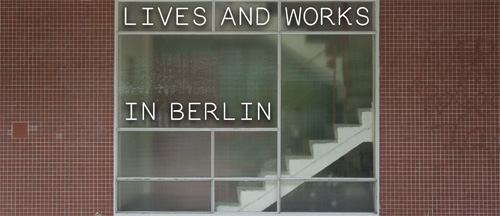Richard Long’s artistic medium, since the 1960s, has been walking. On his walks all over the world, he uses found materials to create formations – circles, lines, ovals — leaving behind remnants of artistic presence that are mostly ephemeral.
While his walks take place outside of the grasp of general art audiences, Long also shows and develops works for interior spaces, bringing some of the natural materials that shape his practice into galleries and museums.
For Berlin Circle, his exhibition at the Hamburger Bahnhof in Berlin, Long has installed six large-scale floor works that are accompanied by two films, Walking a straight 10 mile line forward and back shooting every half mile (1969) and Richard Long in the Sahara.
Circles are the reoccurring shapes that one finds here – not only in Berlin Circle, a stone work with a diameter of 12 meters that was first shown at the opening of the Hamburger Bahnhof in 1996, but also further ones of sandstone, basalt, turf and mud.
What is one to make of Richard Long’s massive indoor circles? Has earth art, once a radical artistic expression coming out of the emerging environmental movements of the 1960s, become a mere aesthetic, a formal exercise of minimalist forms with natural materials? I would say that the works definitely do function on a purely aesthetic level (and this is no diss) for many visitors. I recall that, as I was walking through the space, I also heard someone call them “meditative.”
But while they certainly seem complete, one can also grasp that these forms and materials have a history, a place and time outside of the realm of the exhibition. A realm that is really only known to the artist in full, even though their origins can be traced (the mud of River Avon Mud Circle, for example, comes from the river Avon in Bristol, Long’s hometown), in the Hamburger Bahhof’s large main space, they become abstractions of things, found things, of the natural world.
Richard Long, "River Avon Mud Circle," 2011, exhibition view, Hamburger Bahnhof. Photo: Anna Milandri.
Long’s Berlin Circle is paired with the exhibition Land Art, on view in the upstairs exhibition space, showing some of the prominent names of the Land Art movement, such as Hamish Fulton, Nancy Holt, Douglas Huebler, Walter De Maria, Dennis Oppenheim, and Robert Smithson, amongst others. I see a dialogue going on between Berlin Circle and Land Art – Long’s circles functioning as works with a natural origin but created for the exhibition space, and the Land Art works, mostly represented here in forms of documentation (which in some cases can be argued to be the work, in others, is clearly a mere record).
On one wall, Robert Smithson is quoted on the concept of the non-site with a statement from Oberhausen in 1968: “The Non-Site (an indoor earth work) is a three-dimensional logical picture that is abstract, yet it represents an actual site. It is by this three-dimensional metaphor that one site can represent another site which does not resemble it – thus the Non-Site.”
Today, the idea of the Non-Site resonates in the work of numerous artists not even born at the time of this statement. Smithson’s concept of the relationship between Site and Non-Site, stating that something shown in the gallery can be an abstract picture of something from the natural world, without having to look like it (or look like it completely) is no less contemporary 43 years after the fact. It draws out questions about subjectivity, appropriation, the role of documentation and presentation — all considerations that are constantly re-considered and re-negotiated by artists in the 1960s as well as today.
While visiting German artist Jürgen Drescher’s exhibition at Klosterfelde, I thought about this level of abstraction that Smithson talks about – the abstraction that happens when something is transferred to the (unnatural) context of the exhibition space. One of the three works Drescher shows here, Der Boden unter Benn’s Boden (The Floor Beneath Benn’s Floor, 2008/2010), is a large piece of linoleum taken from a pharmacy one floor down from German poet Gottfried Benn’s former apartment. The “once-removedness” of the linoleum floor from Benn’s actual apartment, who lived in Berlin until his death in 1956, makes tangible the abstraction (in terms of a connection to Benn) that this floor represents. While being a “real” object, the linoleum is not the same in the gallery as it was in the pharmacy. At Klosterfelde, it contrasts with the glossy gray concrete floor and resembles an old worn-out piece of leather in its patina. Viewing it here neither confirms its biography nor that of Gottfried Benn. Rather, it opens up an associative space that takes the objet trouvé as a possibility for speculation. Its title highlights the distance to the subject, Gottfried Benn, who never walked on this floor but whose muffled footsteps might have been heard, at times, through the old floorboards above.
